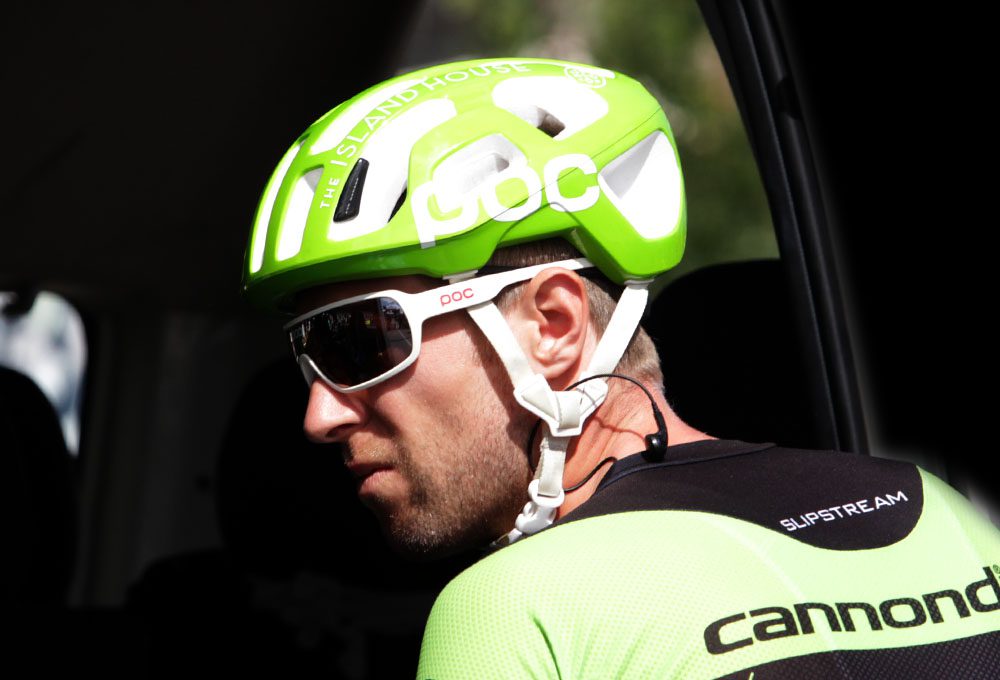“It’s not possible”: Ryder Hesjedal in random motor doping probe at Giro d’Italia


Ryder Hesjedal’s crash during the 2014 Tour of Spain definitely turned heads. It also turned wheels, and therein lay the controversy.
Taking a Stage 7 turn a bit too tightly, Hesjedal crashed, landing hard on his left side as his bike skidded along the asphalt. It’s the way his Cervélo was skidding, though, that prompted viewers and spectators to note something strange—even if that strangeness wasn’t taken especially seriously.
From appearances, it looked like Hesjedal’s wheel continued to turn, despite his feet being off the pedals. The frame of the bike, nearly colliding with the camera, clumsily spun in a half-circle across the pavement before Hesjedal recovered it. .Some commented that the momentum of the freely turning wheel wouldn’t be enough to propel such movement. Others, jokingly, suggested that maybe—just maybe—his bike had a small motor helping that rear wheel.
Not everybody saw it as a laughing matter, though. A few days later, officials from the UCI showed up to investigate public comments the regulatory body had received: Ryder Hesjedal was maybe, possibly motor doping. Almost as soon as they arrived, though, officials didn’t find any motors.
In March, with the release of the Cycling Independent Reform Commission’s (CIRC) report, motor doping was again in the news. “The commission was told of varying efforts to cheat the technical rules, including using motors in frames,” the report reads. “This particular issue was taken seriously, especially by top riders, and was not dismissed as being isolated.” This season as seen a few post-race inspections for motors, most notably at Milan-San Remo. After Thursday’s Stage 18 of the Giro d’Italia, in which Hesjedal fought to move up in the GC, the B.C. native found his bike inspected for a mechanical aid.
“It’s the stupidest thing,” a visibly irritated Hesjedal told a gaggle of reporters, shortly after his bike was hauled off into a tent after ascending Stage 18’s final climb.
Hesjedal’s bike wasn’t the only one snatched up. Contador, Rinaldo Noncentini (Ag2r-La Mondiale), Phillipe Gilbert (BMC) and Kenny Elissonde (FDJ) were also affected by what UCI officials called “unannounced” bike checks, intended to make sure that no hidden motors were involved in anyone’s race performance. “We proceeded to verify the bicycle by removing the saddle, or the pedal axle to view the inside of the bottom bracket,” a memo published by UCI read. It was a quick procedure: barely four minutes, after which no untoward mechanisms were found in any of the inspected bicycles. According to a report by Velo News, cyclists competing said they hadn’t heard of actual cases of the dishonest practice. Still, “motor doping” is something that UCI officials will continue to watch for—possibly to the ongoing chagrin of competing cyclists.
“It’s the most ridiculous thing I’ve ever heard of,” Hesjedal said. “It’s not possible. It’s just not possible.”
